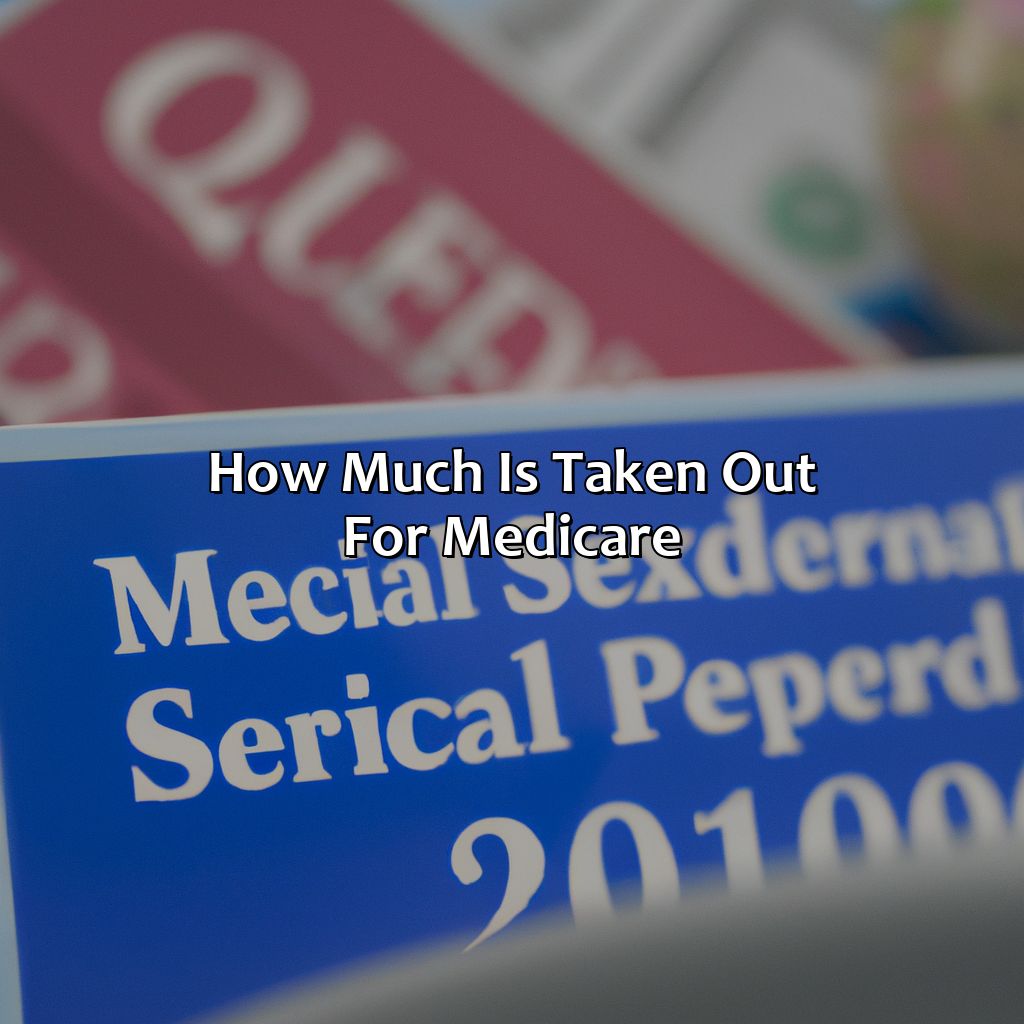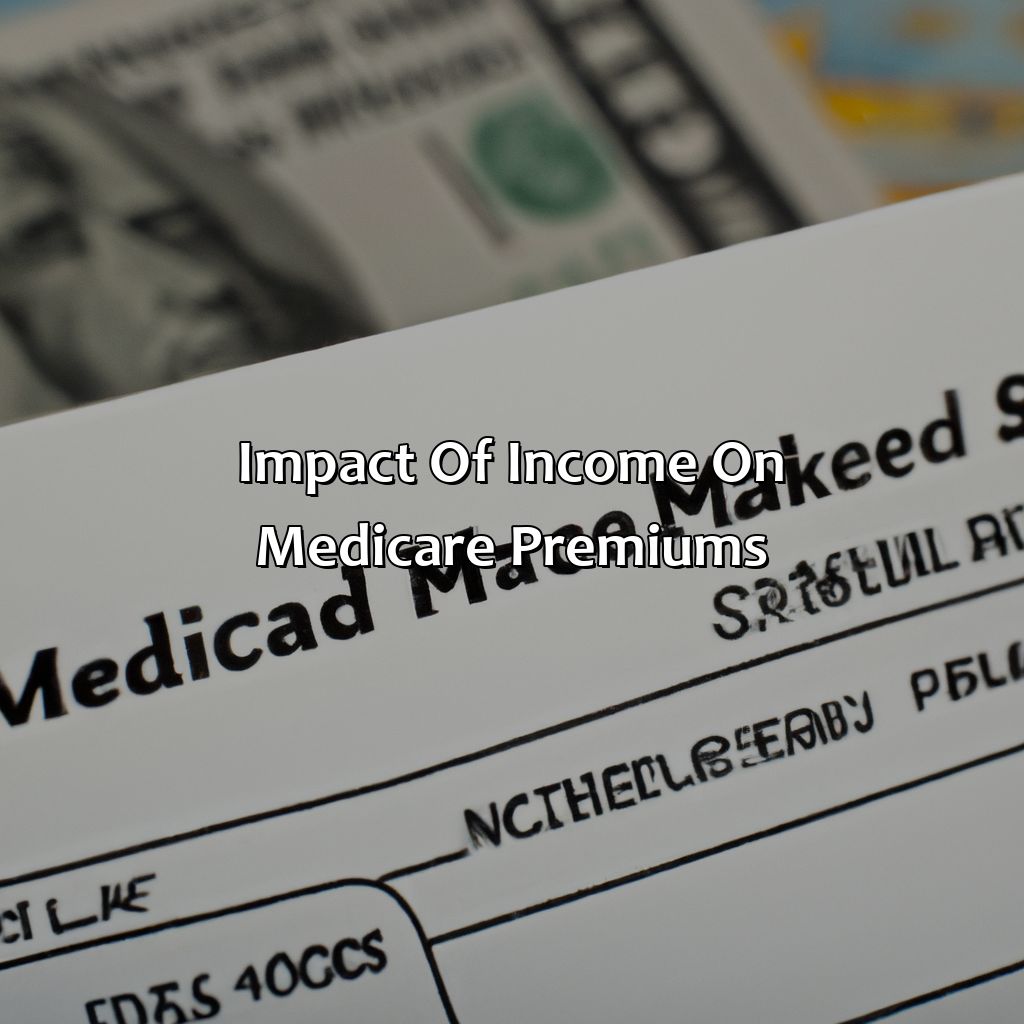How Much Is Taken Out Of Social Security For Medicare?
Key Takeaway:
- Social Security and Medicare are separate programs, but individuals typically have Medicare premiums deducted from their Social Security payments.
- The amount taken out for Medicare depends on various factors, including the specific parts of Medicare coverage, level of income, and any additional taxes.
- Individuals with higher incomes may be subject to an Income-related monthly adjustment amount (IRMAA), which can increase Medicare premiums, but there are ways to reduce or eliminate this adjustment.
Are you worried about how much is taken out of social security for medicare? Understand the impact on your pocket and learn the best strategies to reduce costs. You will gain the confidence to make informed decisions about health care and ensure financial stability.
Social Security and Medicare
Medicare and Social Security benefits are two separate programs but often mentioned together. Medicare is a federal health insurance program primarily for people 65 and older, while Social Security is a retirement benefits program.
When you enroll in Medicare, the Part B premium is typically automatically deducted from your Social Security payments. The standard monthly premium for Part B in 2021 is $148.50, though some people may pay more depending on their income.
It’s worth noting that not all Social Security recipients are enrolled in Medicare, and not all Medicare beneficiaries receive Social Security benefits. Additionally, Medicare Part A, which covers hospital insurance, is free for most people who have worked and paid Social Security taxes for at least 10 years.
Pro Tip: You can save money on healthcare costs by researching and understanding which Medicare coverage options best suit your needs.

Image credits: retiregenz.com by Adam Duncun
How much is taken out for Medicare?
Know how much of your Social Security is taken for Medicare? Read ahead!
Four subsections have unique premiums and taxes. This includes:
- Part A premiums,
- Part B premiums,
- Part D premiums and
- Additional Medicare taxes.

Image credits: retiregenz.com by James Woodhock
Medicare Part A premiums
The cost of Medicare Part A coverage is a vital concern for many individuals. This coverage provides assistance with hospital stays and inpatient care, but how much does it cost?
Well, for those who have paid enough into Social Security, they are typically eligible for premium-free Part A coverage. However, if an individual has not paid enough into Social Security, they may be required to pay a monthly premium for Medicare Part A coverage.
It is important to note that the amount of the premium varies depending on the number of quarters (three-month periods) an individual has worked and paid taxes into Social Security. In 2021, individuals who have worked between 30 and 39 quarters would pay $259 per month for their Part A premiums. Those who have worked fewer than 30 quarters would pay $471 per month.
It is crucial to understand the various costs associated with Medicare Parts A and B to ensure that you are prepared for retirement health care expenses. Medicare Part A premiums can be costly depending on how many quarters an individual has worked, making it essential to plan accordingly.
Don’t miss out on ensuring your financial safety net in retirement – educate yourself today on all aspects of Medicare!
Get ready to shell out more for Medicare Part B premiums than a celebrity hairstylist charges for a trim.
Medicare Part B premiums
Medicare coverage is a vital part of healthcare, and Medicare Part B premiums ensure access to various necessary medical services. Part B premiums are calculated annually based on income brackets, and they cover doctor visits, outpatient procedures, and other essential services.
In addition to monthly premium payments, some individuals may also be required to pay late enrollment penalties or high-income surcharges. However, there are several programs available to help those who cannot afford these additional costs.
One such program is the Medicare Savings Program, which can assist with paying for premiums and some out-of-pocket healthcare expenses. Another suggestion is utilizing Health Savings Accounts or Flexible Spending Accounts to offset unexpected medical costs and help reduce any financial strain.
Overall, it’s important to understand the impact of these premium payments and explore options for assistance if needed. Being informed about the costs of Medicare Part B premiums is essential in ensuring access to necessary healthcare services.
For those worried about high prescription drug costs, fear not – Medicare has got you covered, as long as you don’t mind paying an arm and a leg for Part D premiums.
Medicare prescription drug coverage (Part D) premiums
Exploration of the Costs for Medication Coverage under Medicare
When it comes to Medicare, determining the premiums for medication coverage is essential. This coverage is known as Medicare prescription drug coverage (Part D) premiums and may vary depending on the insurance plan and income bracket of the individual.
A table providing actual data showcasing the various Part D premium costs for 2021 can be found below:
| Income Bracket | Monthly Premium |
|---|---|
| Below $91,000 | $33.06 |
| $91,001 – $109,000 | $48.68 |
| $109,001 – $136,000 | $82.50 |
| $136,001 – $163,000 | $116.40 |
| Above $163,000 | 156.40 |
It should be noted that these rates are subject to change yearly and may have accompanying deductibles or copayments based on the selected plan and medication needs.
To further examine medication costs under Medicare Part D premiums, individuals are encouraged to explore their options with a licensed insurance agent who can help navigate personalized plans.
Interestingly enough, during the initial rollout of Part D in 2006, many seniors found themselves struggling to afford this vital coverage option due to lack of oversight in pricing negotiations between pharmaceutical companies and insurers.
Overall, understanding and actively seeking out information regarding healthcare cost options can result in significant savings while still ensuring appropriate medical care. Who said nothing is certain except death and taxes? Clearly they forgot about additional Medicare taxes.
Additional Medicare taxes
Medicare Taxation: Understanding the Additional Medicare Taxes
Additional Medicare taxes are part of the system that funds Medicare, a federal health insurance program for seniors and disabled individuals. These taxes are levied on both employers and employees, and their purpose is to facilitate an efficient healthcare system primarily through taxes paid by those still actively working. The additional Medicare tax rate for employees is 0.9%, while employers contribute an equal amount.
It is important to note that the additional Medicare tax only applies to high-income earners. For example, those earning above $200,000 in gross income ($250,000 for married couples filing jointly) will have to pay this extra tax on top of their regular Medicare tax contributions.
Call-to-Action: Ensure you understand what portion of your paycheck goes towards funding Medicare. Don’t miss out on valuable benefits if you leave this tax unnoticed. Check with your employer or accountant today.
People say money can’t buy happiness, but apparently it can buy a lower Medicare premium.
Impact of income on Medicare premiums
Want to know how income affects Medicare premiums? Look into this part of the website to find out! Check out the subsections about Income-Related Monthly Adjustment Amount (IRMAA) and how to reduce or even get rid of IRMAA. Get the answers you need to make the most of your Medicare plan and budget.

Image credits: retiregenz.com by David Washington
Income-related monthly adjustment amount (IRMAA)
The IRMAA is an adjustment amount levied on certain Medicare beneficiaries with higher incomes. The income reported on the latest tax return is used to determine if these adjustments should be made. The funds collected from this adjustment are channeled back into Medicare to ensure that it remains sustainable for future generations.
If a beneficiary’s income exceeds the preset threshold, they will have to pay an additional IRMAA on top of their regular Part B and Part D premiums. These thresholds are updated each year to consider the cost-of-living adjustments and designed to raise more money for Medicare and reduce federal spending.
While some beneficiaries may find this unfair, policymakers believe that those with higher incomes can afford to contribute more towards maintaining the healthcare system. It also ensures that Medicare remains accessible to low-income earners who might not be able to afford private health insurance.
Many people have stories about being subject to IRMAA and how it impacted their finances. For instance, one retiree shared how her investment profits pushed her salary above the allowance, causing her Medicare premium rates to soar the following year. She had not realized at the time that her social security money would be reduced by almost half due to IRMAA payments, making it difficult for her budget plan for potential medical expenses in retirement.
Want to reduce or eliminate IRMAA? Easy, just make sure you’re not making any income and living off of ramen noodles for the rest of your life.
Ways to reduce or eliminate IRMAA
To mitigate or eradicate the Income-Related Monthly Adjustment Amount (IRMAA) of Medicare premiums, there are several strategies one can implement.
- Reduce your modified adjusted gross income (MAGI) to get beneath the IRMAA threshold
- Utilize a Qualified HSA Funding Distribution (QHFD)
- Take advantage of claiming deductions and credits that lower MAGI
- Utilize tax-efficient withdrawals from retirement accounts
- Petition Social Security Administration for a reconsideration request if your income significantly decreased
- Investigate alternative coverage options like Medicare Advantage or Medigap policies
It is important to note that these varying strategies have different timelines for implementation and nuances on how they impact the IRMAA calculation. It’s recommended that those who want to reduce or eliminate their IMAA work with a financial professional to identify appropriate actions.
Pro Tip: Work with a financial professional to carefully review and determine your best course of action in reducing or eliminating IRMAA.
Five Facts About How Much is Taken Out of Social Security for Medicare:
- ✅ Most people pay the standard Medicare Part B premium, which is $148.50 in 2021. (Source: Medicare.gov)
- ✅ Individuals with higher incomes may pay more for Medicare Part B and Part D premiums. (Source: Social Security Administration)
- ✅ The percentage of Social Security benefits withheld for Medicare Part B premiums is projected to increase from 25% to 28% by 2026. (Source: Kaiser Family Foundation)
- ✅ The income thresholds for higher Medicare premiums are not adjusted for inflation, meaning more people may be subject to the higher premiums over time. (Source: AARP)
- ✅ Social Security beneficiaries can request to have their Medicare premiums deducted from their monthly benefit payments. (Source: Social Security Administration)
FAQs about How Much Is Taken Out Of Social Security For Medicare?
1. How much is taken out of Social Security for Medicare?
For most people, the standard Medicare Part B premium amount is $148.50 in 2021. This is usually deducted from your Social Security benefits each month. However, higher-income earners may pay more.
2. Can I choose not to have Medicare deducted from my Social Security?
No. If you receive Social Security benefits and are enrolled in Medicare Part B, the premium will be automatically deducted from your monthly benefit payment.
3. Does everyone have to pay the same amount for Medicare Part B?
No. As mentioned earlier, higher-income earners may pay more. This is called the Income-Related Monthly Adjustment Amount (IRMAA).
4. How do I know if I have to pay the IRMAA?
You will receive a notice from Medicare if you have to pay the IRMAA. It will depend on your income tax return from two years prior.
5. What happens if I can’t afford the Medicare premium?
If you have a limited income, you may be eligible for various programs that can help reduce or eliminate your Medicare premiums and other out-of-pocket costs.
6. Are there any other Medicare costs that will come out of my Social Security?
Yes, Medicare Part D prescription drug coverage and Medicare Advantage plan premiums and cost-sharing may also be deducted from your Social Security benefits. However, not everyone will have these additional costs.
